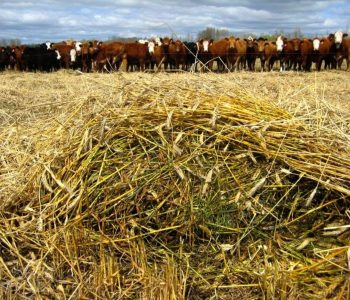When to Harvest Small-Grain Silages?- A Nutritional and Economic Perspective
Introduction: Small-Grain Grasses in Dairy Forage Systems
Small-grain cereals such as barley, triticale, and rye play an important role in dairy forage production, particularly in double-cropping systems where timing and quality are critical. The decision on when to harvest—either at the boot stage (BT) or the soft dough stage (SFT)—significantly impacts forage yield, nutritional quality, and the economics of feeding dairy cows.
Yield Benefits of Harvesting at Soft Dough Stage (SFT)
The study by Ferreira et al. (2025) demonstrates that harvesting at SFT increases dry matter (DM) yield substantially:
- Rye yields up to 3 times more DM at SFT compared to BT.
- Barley and triticale also show more than 2-fold increases in biomass when harvested at SFT.
This increase in biomass results in lower silage cost per unit because fixed inputs are spread over a greater forage yield, making SFT an attractive option from a purely volume-based cost perspective.
Nutritional Trade-offs: Quality vs. Quantity
Despite the yield benefits, nutritional quality declines when harvesting at SFT:
- Crude protein (CP) concentrations are significantly higher at BT, essential for supporting high milk production.
- Fiber components such as neutral detergent fiber (NDF), acid detergent fiber (ADF), and lignin increase at SFT, indicating lower fiber digestibility.
- The rate and extent of fiber degradation decline at SFT, resulting in less energy available to the cow.
These changes can impact rumen health and feed efficiency, making the nutritional trade-offs critical when deciding harvest timing.
Timing Considerations and Crop Rotation
Delaying harvest from BT to SFT can take 24 to 44 additional days, depending on species. This delay:
- Narrows the window for planting subsequent summer crops (e.g., corn or sorghum).
- Can potentially reduce total annual forage production by limiting double-cropping opportunities.
Farmers must weigh forage yield against the broader impact on the entire cropping system.
Economic Impact on Ration Formulation
The study’s ration formulation models examined various commodity price scenarios:
- Low commodity prices: Corn silage often dominates due to better nutrition and price, causing small-grain silages to be excluded unless corn silage availability is limited.
- Limited corn silage availability: Small-grain silages harvested at SFT sometimes become the preferred option due to higher yield and lower cost, despite lower quality.
- High commodity prices: Small-grain silages are more frequently included, but no clear preference exists between BT and SFT harvest stages.
Key Takeaways
- Harvesting at SFT offers more forage but with reduced protein and digestibility.
- Harvesting at BT favors nutritional quality over quantity, ideal for high-producing cows.
- Economic advantages of SFT depend on commodity prices and inventory constraints.
- Harvest timing influences not just forage quality but also crop rotation and farm management decisions.
- Species choice matters less for quality than the timing of harvest.
Conclusion and Future Directions
Ferreira et al. conclude that while harvest maturity profoundly affects forage quality and yield, more research is needed to link these differences to actual dairy cow performance and environmental impacts. These findings provide valuable guidance for farmers and nutritionists balancing yield, quality, and economic efficiency in dairy forage management.
